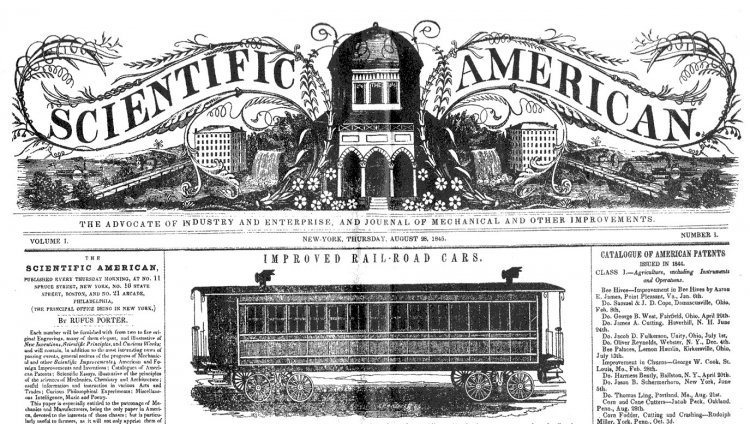Improved Rail-Road Cars was the first title of one of the oldest popular science magazines. The first issue of the legendary Scientific American was published on August 28, 1845. Today it celebrates its 176th anniversary; the magazine is recognized as the oldest U.S. magazine published to this day.
A very small newspaper – first two and later four pages with reports from the scientific world, news, reviews, and stories about inventions and technology. The engravings were illustrating new inventions, scientific laws, and curious works. A new issue every Thursday and an inexpensive subscription: $2 a year, the first immediately and the second within six months.
The magazine was created by inventor Rufus Porter. In the early stages, a lot of news were taken from reports of the U.S. Patent Office. The magazine was created as “an advocate of industry and enterprise” and as “a journal of mechanics and other improvements.” Years later, one can recall what the magazine wrote about 50, 100, and 150 years ago, what excited the scientific world and what inventions were pushing progress. The journal’s modern issues have a section called “This Date in History,” which contains excerpts from the articles published half a century and a century ago and can tell you about erroneous theories or great inventions.
The first page of the first issue contained a message from the magazine's publishers to their readers. Among other things, it said: “The magazine was created specifically for mechanics and manufacturers and was intended only for the American reader, so the focus of attention was placed on their problems. However, the magazine was also popular among farmers, because they could learn about various agro-cultural gadgets from it. The magazine was also very popular among young people and children, as it provided much more knowledge than going to school five times.”
Today about 100,000 copies of the magazine are sold in the United States and as many more in other countries around the world. Scientific American publishes 18 foreign-language editions around the world, including the Russian edition of V Mire Nauki, which originated in the Soviet Union and continues its publication.






















